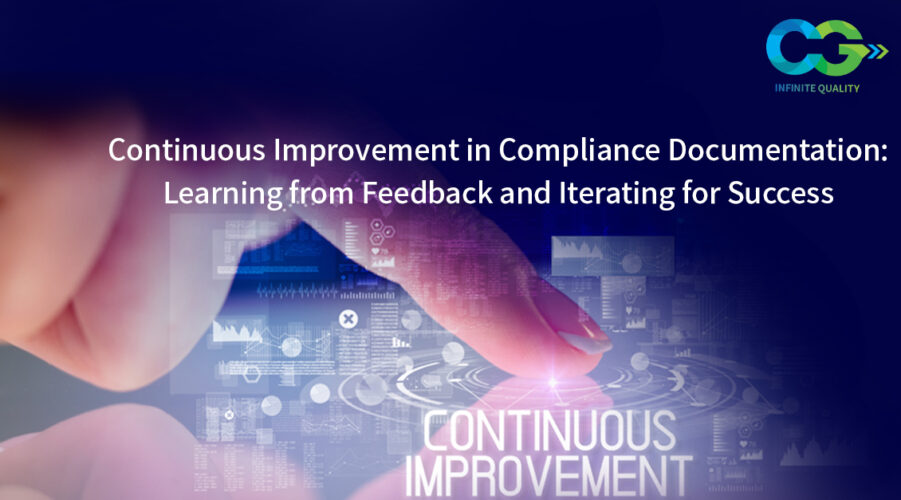
Article Context:
In today's ever-evolving regulatory landscape, ensuring your compliance documentation is accurate, accessible, and effective is crucial. Continuous improvement in compliance documentation entails leveraging feedback and refining existing processes iteratively to attain success. Here is how embracing a continuous improvement approach, driven by feedback and iteration, can elevate your documentation to unprecedented levels of excellence.
Below are effective ways for organizations to implement this approach:
Establish a Baseline:
- Review Existing Documentation: Start by thoroughly analyzing your current compliance documentation. Identify areas of strength and weakness in terms of clarity, accuracy, and organization.
- Define Compliance Goals: Clearly outline the specific goals your documentation aims to achieve. This could be ensuring employee understanding of regulations, providing clear procedures, or facilitating smooth audits.
Gather Feedback:
- Identify Stakeholders: Pinpoint the key stakeholders who rely on your compliance documentation. This might include employees, management, regulators, and external partners.
- Create Feedback Mechanisms: Develop multiple channels for stakeholders to provide feedback either my setting up a working session or sharing the document via collaborative review.
- Encourage Open Communication: Promote a culture where providing feedback on compliance documentation is encouraged and valued.
Analyze, Prioritize Update Document:
- Turn Feedback into Action: Dive deep into the feedback from all stakeholders. Look for common threads, recurring problems, and ways to make the documentation even better. This includes analyzing both written comments and suggestions and any data available on document usage and effectiveness.
- Strategize Your Enhancements: Prioritize documentation updates based on their impact on compliance. Consider the severity of the feedback, its effect on overall effectiveness, and the resources needed to implement the changes. Address critical issues first, but do not neglect opportunities for quick wins with smaller improvements.
- Refine for Users: Leverage stakeholder feedback to continuously improve your compliance documentation. Make targeted revisions, updates, and enhancements based on their input. Integrate clear explanations, extra examples, and any necessary clarifications to ensure the documentation is user-friendly and easy to understand for all end-users.
- Empower Continuous Improvement: Involve key stakeholders throughout the documentation update process. This collaborative approach ensures changes align with organizational goals, regulatory compliance, and industry best practices. Compliance officers, subject matter experts, legal counsel, and others will provide valuable input and help validate proposed revisions.
Version Control and Communication:
- Version Control: Implement a clear version control system to track changes made to your documentation. This allows users to see the evolution of the document and ensures they are referencing the most up-to-date version.
- Communicate Updates: Clearly communicate all changes to compliance documentation to employees, managers, and anyone else affected. Explain the reasons behind the revisions and provide easy access to the updated documents. This transparency fosters understanding and ensures everyone is on the same page.
Regularly review and adapt compliance documentation based on evolving regulatory requirements, organizational changes, and lessons learned from feedback and monitoring. Continuously iterate on documentation to ensure that it remains relevant, accurate, and effective in supporting compliance efforts.
By learning from feedback and iteratively improving compliance documentation, organizations can enhance compliance effectiveness, mitigate risks, and foster a culture of continuous improvement that supports long-term success.

AUTHOR:
Siva Kalidoss
Assoc Director, Delivery
